new posts in all blogs
Viewing: Blog Posts Tagged with: Diversity Links, Most Recent at Top [Help]
Results 1 - 25 of 38
How to use this Page
You are viewing the most recent posts tagged with the words: Diversity Links in the JacketFlap blog reader. What is a tag? Think of a tag as a keyword or category label. Tags can both help you find posts on JacketFlap.com as well as provide an easy way for you to "remember" and classify posts for later recall. Try adding a tag yourself by clicking "Add a tag" below a post's header. Scroll down through the list of Recent Posts in the left column and click on a post title that sounds interesting. You can view all posts from a specific blog by clicking the Blog name in the right column, or you can click a 'More Posts from this Blog' link in any individual post.
In case you haven’t noticed, there’s been a lot of talk lately about the need for more diversity in books. We already know that the population of the United States is rapidly changing, and people have been demanding books that reflect this. From the #WeNeedDiverseBooks campaign to this recent article from School Library Journal, the demand for diverse titles grows louder every day. One category we often get asked about is recommendations of books featuring Middle Eastern and Muslim characters, so we thought we’d put together a list of some favorites:

- The Butter Man, by Elizabeth & Ali Alalou, ill. by Julie Klear Essakalli: As young Nora waits impatiently for her mother to come home from work and for her father to serve the long-simmering couscous that smells so delicious, her father tells her about his childhood in Morocco.
- Coming to America: A Muslim Family’s Story, by Bernard Wolf: With captivating photographs and engaging text, Bernard Wolf invites us into the life of this close-knit family — a family whose love and courage speak for all immigrants who work hard and make sacrifices in the pursuit of a better life.
- Deep in the Sahara, by Kelly Cunnane, ill. by Hoda Hadadi: Lalla lives in the Muslim country of Mauritania, and more than anything, she wants to wear a malafa, the colorful cloth Mauritanian women, like her mama and big sister, wear to cover their heads and clothes in public.
- The Flag of Childhood: Poems From the Middle East, selected by Naomi Shihab Nye: In this stirring anthology of sixty poems from the Middle East, honored anthologist Naomi Shihab Nye welcomes us to this lush, vivid world and beckons us to explore.
- Four Feet, Two Sandals, by Karen Lynn Williams & Khadra Mohammed, ill. by Doug Chayka: Ten-year-old Lina is thrilled when she finds a sandal that fits her foot perfectly, until she sees that another girl has the matching shoe. But soon Lina and Feroza meet and decide that it is better to share the sandals than for each to wear only one. As the girls go about their routines washing clothes in the river, waiting in long lines for water, and watching for their names to appear on the list to go to America the sandals remind them that friendship is what is most important.
- Golden Domes and Silver Lanterns: A Muslim Book of Colors, by Hena Khan, ill. by Mehrdokht Amini: This picture book for young readers celebrates Islam’s most colorful traditions.
- The Grand Mosque of Paris: A Story of How Muslims Saved Jews During the Holocaust, by Karen Gray Ruelle, ill. by Deborah Durland DeSaix: This nonfiction picture book tells the story of how the Grand Mosque in Paris was used to hide Jews and escaped prisoners-of-war during the Nazi occupation.
- King For a Day, by Rukhsana Khan, ill. by Christiane Krömer: This lively, contemporary story introduces readers to a centuries-old festival and the traditional sport of kite fighting, and to a spirited, determined young boy who masters the sport while finding his own way to face and overcome life’s challenges.

- The Librarian of Basra: A True Story from Iraq, written & ill. by Jeanette Winter: Alia Muhammad Baker is a librarian in Basra, Iraq. For fourteen years, her library has been a meeting place for those who love books. Until now. Now war has come, and Alia fears that the library–along with the thirty thousand books within it–will be destroyed forever.
- Mystery Bottle, written & ill. by Kristen Balouch: A boy in Brooklyn receives a package from Iran. When he opens up the mysterious bottle that lies within, a great wind transports him over the oceans and mountains, straight into the arms of his grandfather.
- Nadia’s Hands, by Karen English, ill. by Jonathan Weiner: The morning of her aunt’s wedding, Nadia’s hands are decorated with “mehndi.” But Nadia is worried. When she goes to school on Monday, what will her classmates think of her hands? Will they understand that “mehndi “is part of her Pakistani heritage?
- Ruler of the Courtyard, by Rukhsana Khan, ill. by R. Gregory Christie: The chickens in Saba’s yard are especially mean, chasing her and pecking at her toes. But when she sees a snake in the bathhouse, Saba realizes that she has to act fast to protect herself and her nani, her grandma, from the snake. Can she conquer the chickens and the snake to become the Ruler of the Courtyard?
- Sami and the Time of the Troubles, by Florence Parry Heide & Judith Heide Gilliland, ill. by Ted Lewin: A ten-year-old Lebanese boy balances his life in a war-torn city.
- Sharing Our Homeland: Palestinian and Jewish Children at Summer Peace Camp, by Trish Marx, photographed by Cindy Karp: Sharing Our Homeland gives an inside view of how one summer camp is working to create a foundation for peace.

- The Sifrah Glider, by Ahmad AbdulGhani Al Redha, ill. by Joanne Mendelski: A class of children is in for a treat when their class guest turns out to be an Emirati man who teaches them about his traditional dress and the significance behind each item.
- Silent Music: A Story of Baghdad, by James Rumford: Like other children living in Baghdad, Ali loves soccer, music and dancing, but most of all, he loves the ancient art of calligraphy. When bombs begin to fall on his city, Ali turns to his pen, writing sweeping and gliding words to the silent music that drowns out the war all around him.
- Sitti’s Secrets, by Naomi Shihab Nye, ill. by Nancy Carpenter: When Sitti, an American girl, goes to visit her grandmother in her small Middle Eastern village on the other side of the world, they don’t need words to understand each other’s heart.
Note that we have not read every book on this list, so we always recommend doing some of your own research to determine cultural accuracy. A great place to find top-quality books is the Middle East Book Award, the Bridging Cultures Muslim Journeys Bookshelf, and this recent School Library Journal article.
And if you have any additions, please do leave them in the comments!
More book lists:
Children’s Books About Transracial Adoption
Picture Books About Travel
Filed under:
Book Lists,
Diversity Links Tagged:
children's books,
diversity,
middle east,
middle eastern interest,
muslim interest 


By:
keilinh,
on 5/13/2014
Blog:
The Open Book
(
Login to Add to MyJacketFlap)
JacketFlap tags:
diversity,
booklist,
Resources,
multicultural books,
groundwood books,
webinar,
Diversity Links,
DiYA,
tuttle publishing,
The Diversity Gap,
diverse books,
lorimer books,
Add a tag
Looking for new diverse books for your collection? We’re doing a webinar this afternoon at 2:00 pm EST with Booklist and several diverse publishers – don’t miss it! Sign up free here.
It’s going to be great!
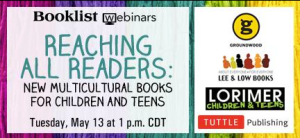
Filed under:
Diversity Links,
DiYA,
Resources,
The Diversity Gap Tagged:
booklist,
diverse books,
diversity,
groundwood books,
lorimer books,
multicultural books,
tuttle publishing,
webinar 

In 2010, Djuan Trent made history when she became one of four African-American women to win the pageant title of Miss Kentucky. Earlier this month, she made history yet again.
On her blog, Life in 27, Trent opened up about her sexuality and announced that she was “queer,” becoming the first contestant to publicly come out as queer.
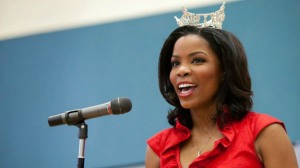
Former Miss Kentucky Djuan Trent. (Photo courtesy of Facebook/Kellie Carter Photography)
In the world of beauty pageants, an industry often accused of objectifying women and embracing outer beauty rather than inner beauty, it’s refreshing to see someone who is breaking down the barriers of what is “beautiful.” Trent struggled with whether she should come out or not, but ultimately, she decided it was something she needed to do, especially after a Kentucky federal judge overturned parts of Kentucky’s same-sex marriage ban in February and set an effective date for his ruling today.
Trent encourages others to follow her lead, saying, “People can’t know that their best friend, brother, sister, co-worker, neighbor, news anchor, favorite singer, or local coffee shop barista is being oppressed and denied the rights in which their heterosexual counterparts are so happily welcomed partake, unless you open your mouth and say it.”
We couldn’t have said it better.
Filed under:
Diversity Links,
Lee & Low Likes,
Musings & Ponderings Tagged:
beauty pageants,
djuan trent,
kentucky,
lgbtq rights,
miss kentucky 


By:
Hannah,
on 3/21/2014
Blog:
The Open Book
(
Login to Add to MyJacketFlap)
JacketFlap tags:
multicultural,
diversity,
book awards,
publishing,
Bookstores,
resources,
multicultural books,
Diversity Links,
Publishing 101,
colormyshelf,
Add a tag
Recently The New York Times paired articles by Walter Dean Myers and his son Christopher Myers, discussing the lack of representation of people of color in children’s literature. Those excellent articles—which pointed out that in the long history of children’s literature we haven’t made much progress—caught the attention of best-selling author Jennifer Weiner, who started the #colormyshelf hashtag on Twitter asking for suggestions of diverse books that she could go purchase for her daughter. What a wonderful way to bring attention to what parents can do!
Just because diverse books don’t always show up front and center in bookstores doesn’t mean they don’t exist. Here’s a list of places to find great diverse books for young readers. Buy them, read them, recommend them. Showing demand for diverse books is one of the best ways to encourage the publication of more of them!
1. Publishers: Several small publishers (us included) focus on diverse books. They’re a great place to start, and you can usually buy books from them directly, order them through an online retailer like Amazon or Barnes & Noble, or ask your local bookstore to order them (which also displays a demand for diverse titles):
Lee & Low Books (diverse books for young readers featuring a range of cultures)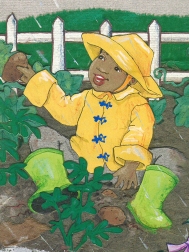
Tu Books, an imprint of Lee & Low (diverse middle grade and young adult speculative fiction)
Children’s Book Press, an imprint of Lee & Low (bilingual English/Spanish picture books)
Cinco Puntos Press (adult and children’s literature, and multicultural and bilingual books from Texas, the Mexican-American border, and Mexico)
Just Us Books (black interest and multicultural books for children and young adults)
Roadrunner Press (fiction and nonfiction for young readers focusing on the American West and America’s Native Nations)
Piñata Books, an imprint of Arte Público (juvenile and young adult books focused on Hispanic culture and by U.S. Hispanic authors)
Groundwood Books (Canadian publisher of books for young readers with a focus on diverse voices)
2. Blogs That Recommend Diverse Books: There are some great bloggers out there who do the hard work of seeking out, reading, and recommending diverse children’s books, so you don’t have to! Just hop over to their blogs to find great new books to add to your collection:
The Brown Bookshelf (African American books)
American Indians in Children’s Literature (Native American books)
Latinos in KidLit (Latino books )
BookDragon (all diverse books, with a special focus on Asian/Pacific Islanders cultures)
Diversity in YA (diverse young adult books)
Rich in Color (diverse books for all young readers)
Crazy QuiltEdi (diverse books for all young readers)
Lee & Low Pinterest Board (diverse books searchable by genre and age)

3. Awards: If you’re simply looking for the best of the best that’s been published each year, awards are the place. Books that win these awards have been vetted by experts (mostly librarians) so you can expect them to be top quality, beautiful, and culturally accurate.
Coretta Scott King Award (African American books)
Pura Belpré Award (Latino books)
Asian/Pacific American Award for Literature
Middle East Book Award
American Indian Youth Literature Award
South Asia Book Award
Américas Book Award (Latin American, Caribbean, and Latino books)
Tomás Rivera Book Award (Mexican American books)
Notable Books for a Global Society (outstanding trade books that help promote understanding across lines of culture, race, sexual orientation, values, and ethnicity)
4. Bookstores: If you prefer to purchase your books through good old-fashioned browsing, there are several great independent bookstores that make it a point to stock diverse books. Below are a few we’ve been to, or that have been recommended to us by readers. If you’re in the area, be sure to stop by to support them!
Avid Bookshop, Athens, GA
Calamus Bookstore, Boston, MA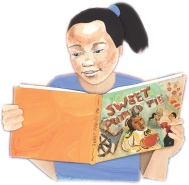
La Casa Azul New York, NY
Quimby’s, Chicago, IL
Women and Children First, Chicago, IL
The Book Stall, Winnetka, IL
Politics and Prose, Washington DC
Busboys and Poets, Washington DC
The Flying Pig Bookstore, Shelburne, VT
Birchbark Books, Minneapolis, MN
Ancestry Books, Minneapolis, MN (coming soon)
Antigone Books, Tucson, AZ
Wellesley Books, Wellesley, MA
Librería Martinez, Santa Ana, CA
What did we miss? Let us know in the comments!
Filed under:
Diversity Links,
Publishing 101 Tagged:
book awards,
Bookstores,
colormyshelf,
diversity,
multicultural,
multicultural books,
publishing,
resources 


By:
keilinh,
on 3/5/2014
Blog:
The Open Book
(
Login to Add to MyJacketFlap)
JacketFlap tags:
diversity,
inspiration,
Oscars,
Academy Awards,
Musings & Ponderings,
Diversity Links,
The Diversity Gap,
2014 Academy Awards,
diversity gap,
Lupita Nyong,
Add a tag
The glitz, fashion, and the glamorous parties are over, but we at LEE & LOW BOOKS are still thinking about the 86th Annual Academy Awards. We were excited to see our infographic on the diversity gap in the Academy Awards shared in several places, including the New York Times Carpetbagger blog, MSNBC’s The Grio, and Colorlines. Even Ellen started off the night with a joke about diversity (“Possibility number one, 12 Years a Slave could win. Possibility number two, you’re all racists. Now please welcome our first white presenter…”). But the highlight of this year’s ceremony was seeing some big wins in diversity:
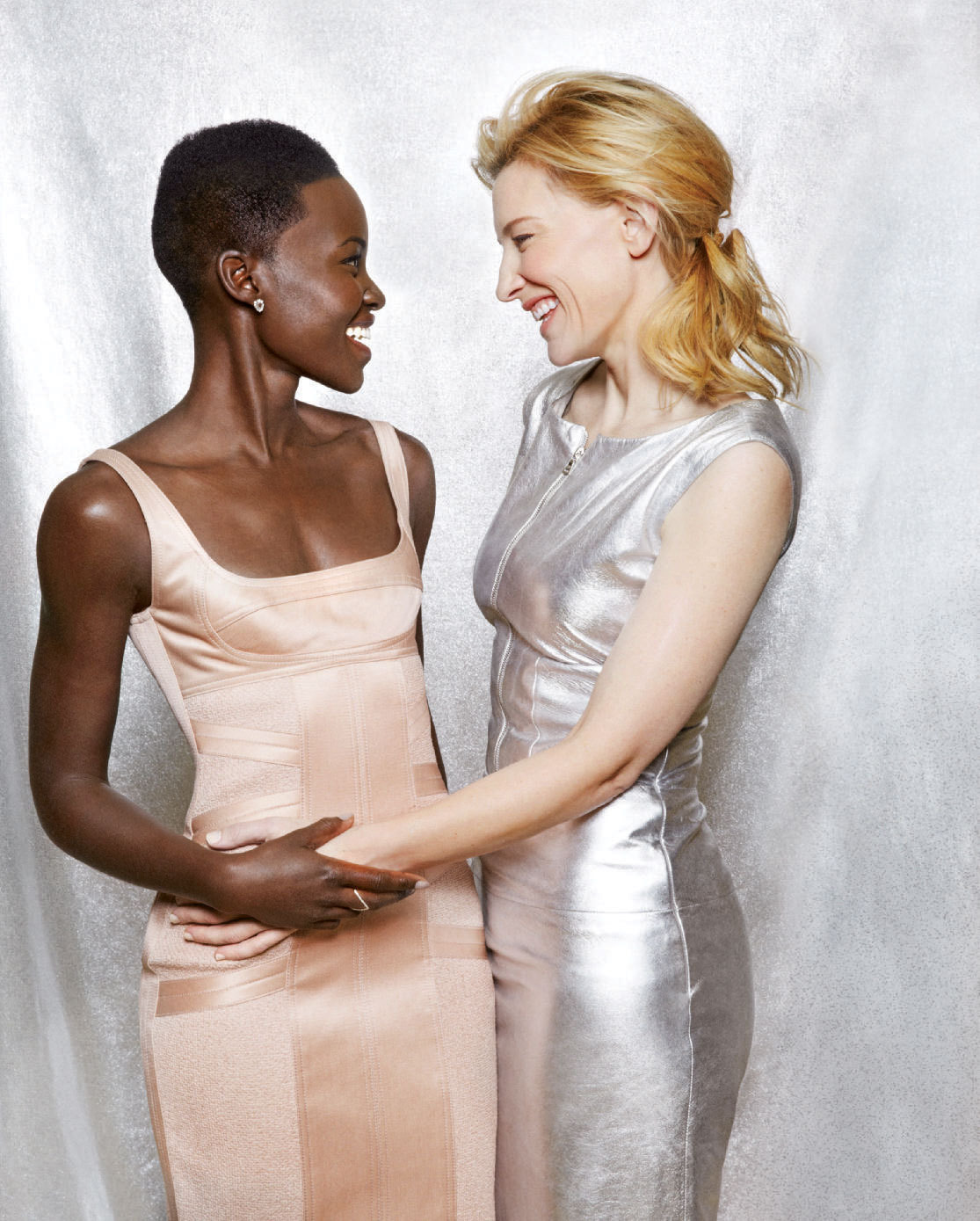
2014 Oscar winners Lupita Nyong’o and Cate Blanchett
Lupita Nyong’o, Best Supporting Actress for “12 Years a Slave”: Lupita Nyong’o's touching acceptance speech reminded every aspiring actor and actress that “no matter where you’re from, your dreams are valid.”
Cate Blanchett, Best Actress for “Blue Jasmine”: Cate Blanchett’s empowering speech was an inspiration for women everywhere, as she addressed the stereotype that “female films with women at the center are niche experiences. They are not. Audiences want to see them and, in fact, they earn money. The world is round, people.”

Directors Steve McQueen and Alfonso Cuarón
Alfonso Cuarón, Best Director for “Gravity”: Alfonso Cuarón became the first Latino director to ever win an Oscar, and in response to a backstage interview with the world press, he said he would “love if that same support is given to some other films that are coming out of there with Mexican filmmakers, shot in Mexico, and with Mexican subject matters.”
Best Picture for “12 Years a Slave”: This film set in pre-Civil War America follows Solomon Northup, a free black man who is abducted and sold into slavery. This is the first time a film directed by a black filmmaker has won Best Picture. Director Steve McQueen dedicated the win to “all the people who have endured slavery. And the 21 million people who still suffer slavery today.”
Congratulations are also due to Robert Lopez, the first Filipino-American ever to win an Oscar for his song “Let It Go” from the movie “Frozen,” and John Ridley for his Oscar for the “Twelve Years a Slave” screenplay, marking only the second time that a black screenwriter has won the award.
It was also a breath of fresh air to see new Academy Director Cheryl Boone Isaacs walk out onstage to introduce herself.
While the wins will certainly change the bleak numbers we reported last week, one year alone is not enough. Here’s hoping this year’s big wins mean more people of color in front of and behind the cameras in the future!
Filed under:
Diversity Links,
Musings & Ponderings,
The Diversity Gap Tagged:
2014 Academy Awards,
Academy Awards,
diversity,
diversity gap,
inspiration,
Lupita Nyong,
Oscars 


By:
Jaclyn DeForge,
on 1/28/2013
Blog:
The Open Book
(
Login to Add to MyJacketFlap)
JacketFlap tags:
Resources,
Read Alouds,
reading comprehension,
Diversity Links,
common core standards,
Curriculum Corner,
guided reading,
appendix b,
classroom libraries,
common core standards appendix b,
common core standards ela appendix b,
common core standards language arts appendix b,
Add a tag
 Jaclyn DeForge, our Resident Literacy Expert, began her career teaching first and second grade in the South Bronx, and went on to become a literacy coach and earn her Masters of Science in Teaching. In her column she offers teaching and literacy tips for educators.
Jaclyn DeForge, our Resident Literacy Expert, began her career teaching first and second grade in the South Bronx, and went on to become a literacy coach and earn her Masters of Science in Teaching. In her column she offers teaching and literacy tips for educators.
When the Common Core Standards were created, the authors included a list of titles in Appendix B that exemplified the level of text complexity (found in Appendix A) and inherent quality for reading materials at each grade level. This list was intended as a comparative tool, as a way for teachers and administrators to measure current libraries against country-wide expectations for rigorous literature and informational text. Since its publication, this list, and the titles included and omitted, have created quite a bit of controversy.
Two things are fairly obvious when considering the texts included in Appendix B:
- Most of the titles were first published ages ago.
- Most of the titles are by white people. Or about white people. It’s a pretty white list.
Two things are also fairly important when constructing a classroom library and when selecting texts for instruction:
- Students should have the opportunity to be exposed to both classic and contemporary literature as well as nonfiction texts.
- All students should have the opportunity to see themselves reflected back, as well as to be exposed to cultures and experiences that may differ from their own, in the literature and nonfiction texts we study.
Education Professor Katie Cunningham discussed diversity in Appendix B here on the blog a few weeks ago in her guest post, “What’s in your classroom library? Rethinking Common Core Recommended Texts.” Adding on to her recommendations, I’ve compiled a supplement to Appendix B that includes both contemporary literature and authors/characters of color, but also meets the criteria (complexity, quality, range) used by the authors of the Common Core. Download it here.
If you’re interested in ordering some or all of these titles to supplement your classroom library, please feel free to drop me an email at [email protected]!
What books would you add to Appendix B?
Further Reading:
What’s in your classroom library? Rethinking Common Core Recommended Texts
What is Close Reading?
Filed under:
Curriculum Corner,
Diversity Links,
Resources Tagged:
appendix b,
classroom libraries,
common core standards,
common core standards appendix b,
common core standards ela appendix b,
common core standards language arts appendix b,
guided reading,
Read Alouds,
reading comprehension 


By:
Hannah,
on 9/21/2012
Blog:
The Open Book
(
Login to Add to MyJacketFlap)
JacketFlap tags:
native imagery,
diversity,
good news,
Native American,
racialicious,
whitewashing,
Musings & Ponderings,
Diversity Links,
Race issues,
Add a tag
A lot of the time, discussions about diversity, racial equality, and pop culture can be disheartening. A quick look at Racebending or Racialicious is a good reminder of how far we still have to go when it comes to respecting all cultures, especially in the media. But sometimes, good things happen. People and companies take steps forward. And when that happens, we should talk about it. It’s nice to be able to talk about what people are doing right instead of what they’ve done wrong.
With that in mind, I wanted to share this nice story from the Native Appropriations blog. To make a long story short, the company Paul Frank held a “Dream Catchin’ Pow Wow” party in Los Angeles a few weeks ago for Fashion’s Night Out, with a “Neon-Native American Pow Wow theme” complete with plastic tomahawks, feather headdresses, and a drink called the “Rain Dance Refresher.” On her blog, Adrienne wrote up a post about why the party was so offensive to Native Americans and several others wrote, tweeted, posted, or spoke about it as well.
This story could have had the same sad ending many others have: a half-hearted corporate apology but no real change. Instead, Adrienne got a phone call with the president of Paul Frank Industries, Elie Dekel, so they could discuss what went wrong and how to do better in the future. The company outlined several steps they would be taking to right the wrong, including removing Native-inspired designs from their digital/online imprint, working with a Native artist to make new designs, and collaborating with Adrienne and Beyond Buckskin blogger Jessica Metcalfe on a panel about the use of Native imagery in the fashion industry. You can see more about Paul Frank’s plans here.
It’s really nice to see a conversation about the appropriation of Native culture have such a positive outcome. Congratulations to Adrienne, and kudos to Paul Frank for stepping up, apologizing, and earnestly looking for a way to do better.
In other positive news, check out this handsome guy who was cast as Magnus in the upcoming Mortal Instruments movie based on the YA novel by Cassandra Clare:

In this Tumblr post, Clare describes why she was adamant that Magnus be cast as Asian. So many characters of color have been whitewashed in the book-to-movie transition; I’m glad to see that Magnus isn’t one of them.
Happy Friday!
Filed under:
Diversity Links,
Musings & Ponderings Tagged:
diversity,
good news,
Native American,
native imagery,
Race issues,
racialicious,
whitewashing 

From time to time, race issues pop up in advertising. Race is a tricky subject in advertising because common approaches tend to reinforce racial stereotypes and rub people the wrong way if not handled with care.
Sensibilities vary from city to city and from country to country. Since the United States went through the civil rights movement, many Americans are aware of race issues and may recognize on their own when people of color are depicted in an unfavorable light.

In 2010, a KFC ad ran in Australia depicting a lone white fan at a cricket game, surrounded by a rowdy bunch of black West Indians. To restore order, the white cricket fan placates the entire crowd with a bucket of fried chicken. I’ve read commentary from Australians rejecting claims that the ad perpetuates racial stereotypes, but the controversy raised enough public ire that KFC eventually pulled the ad.

In 2011, Nivea ran an ad depicting a preppy, groomed black man holding the head of his former self, who is sporting a beard, an Afro, and an angry expression. The ad clearly conveyed a message—the idea that natural hair on a black man is uncivilized, rather than simply being a style preference or a nod to Afrocentrism. The ad was pulled and the company issued an apology.

The main goal of some political ads is to spread fear and distrust of opposing candidates by focusing on differences that can be portrayed as “anti-American.” This ad for Pete Hoekstra’s Michigan Senate run was shown during the 2012 Super Bowl. The fact that this ad encouraged xenophobia caused such outrage against Pete Hoekstra that Hoekstra’s opponent Debbie Stabenow actually saw a rush of donations to her campaign as a direct result of the ad. The ad was pulled by the Hoekstra campaign soon after.
On the other hand, many ads that feature people of color are successful:
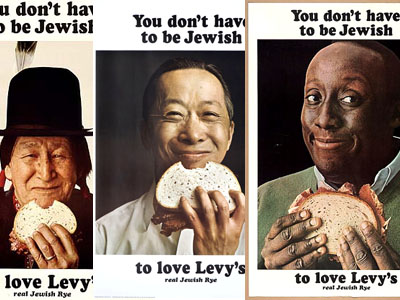
In the 1960s, Levy’s Jewish Rye ad campaign was an effort to expand the customer base of Levy’s Jewish Rye beyond the Jewish community. The ad campaign featured ordinary New Yorkers of diverse ethnic and cultural backgrounds and was groundbreaking for its inclusiveness.
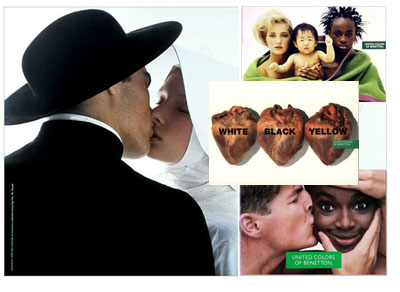
In the 1980s, the clothing company United Colors of Benetton gained a reputation for pushing the envelope in areas of race and religion with some of the most memorable ad campaigns in advertising history. I’ve heard some people complain that some Benetton ads are racist, but provocative ads are designed to test the line of what is appropriate and to make people literally stop in their tracks and take notice.

In 2000, Ca
As you may know, today is International Women’s Day. Although it has become a bit of a Valentine’s Day sequel in some communities, many countries are still recognizing the holiday for it’s original purpose. The United Nations created this day to recognize women who have impacted our world, as well as a way to focus public service efforts towards women in need around the world.
Each year since 1975 (when the United States began celebrating IWD), the United Nations selects a theme to focus the day’s efforts. This year’s theme is “Empower Rural Women- End Hunger and Poverty”, and I encourage you to find out more about what you can do to participate in this important cause.
Another way to celebrate women is by learning about a woman who has changed history, particularly those who have not received recognition for her contributions. Remembering these women, many of whom weren’t recognized in their own day or have since been forgotten, is an important aspect of realizing how far we have come, and how far we have yet to go, in terms of women’s rights. Click on the image below for a selection of Lee & Low titles that introduce you to some such women, each of whom, we believe, should have her own holiday.
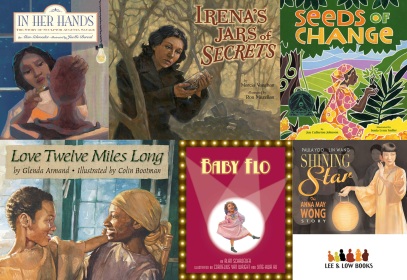
Filed under:
Diversity Links,
Holidays Tagged:
International Women's Day,
IWD,
United Nations,
women in history 







Happy Halloween, everyone!
Some of you may have seen this new anti-racism poster campaign coming out of Ohio State University, put together by one of their student organizations:
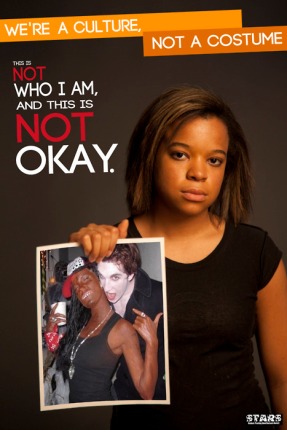
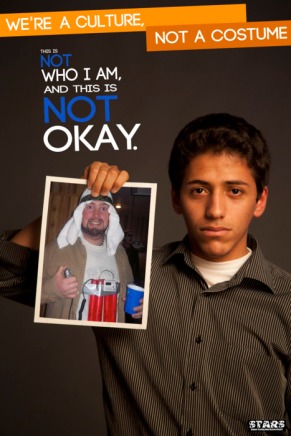
The campaign quickly went viral and has drawn national attention (along with a number of parodies). What’s good about these posters is the extensive discussions they’ve sparked around the country. Are costumes based on a stereotype inherently racist? Where is the line drawn between racism and a casual joke—and is there ever such a thing as a casual joke about race? Who gets to decide if something has crossed the line?
Some have dismissed the posters as being too sensitive and taking the fun out of Halloween. But Cherokee blogger Adrienne asks the key follow-up question: “Why does your fun have to come at the expense of my well-being?”
Meanwhile, take a look at this amazing pumpkin YA author and blogger Kate Hart carved with the cover image of Under the Mesquite:
 Gorgeous!
Gorgeous!
Happy Halloween, everyone!
Filed under:
Diversity Links,
Musings & Ponderings Tagged:
diversity,
Race issues,
Under the Mesquite 



 0 Comments on Halloween: A culture, not a costume as of 1/1/1900
0 Comments on Halloween: A culture, not a costume as of 1/1/1900
We took a short break from blogging in the wake of last week’s big event in the children’s book world: the American Library Association’s annual announcement of their Youth Media Awards—or, as some like to call it, “The Oscars of Children’s Literature.” No outlandish outfits at these Oscars, but a few of our books do now have nice, shiny accessories on their covers:
Yummy: The Last Days of a Southside Shorty, winner of the Coretta Scott King Author Award Honor and an ALA Notable Children’s Book

Seeds of Change: Planting a Path to Peace, winner of the Coretta Scott King/John Steptoe Award for New Talent in Illustration

¡Olé! Flamenco, winner of the Pura Belpré Author Award Honor and an ALA Notable Children’s Book

And a bit more good news we received:
Yummy is on YALSA’s Top Ten Quick Picks for Reluctant Young Adult Readers and the Top Ten Great Graphic Novels for Teens lists for 2011!
Seeds of Change is on the Amelia Bloomer Project 2011 List from the American Library Association’s Feminist Task Force
and Sharing Our Homeland is a Sydney Taylor Notable Book from the Association of Jewish Libraries
We are THRILLED THRILLED THRILLED to have so many of our books honored this year! It’s really something for a small indie publisher like us to be able to make a showing in the big leagues like this.
On that note, Kyra over at Black Threads in Kid’s Lit has a fascinating breakdown of Coretta Scott King Award statistics, including some interesting numbers on winners broken down b
Another Friday is here, and we have another round of links to articles we think you’ll appreciate. Enjoy, and feel free to come back and comment on what you thought.
Our first reading suggestion comes from the New York Times. This year is the 150th anniversary of the start of the civil war, and the Times has a new column, disunion, that follows the war’s developments, day by day but a century and a half later. You can start at the beginning, or you may be particularly interested in Jim Crow on West Broadway, about a young African American man who refused to get off a whites-only streetcar, a hundred years before Claudette Colvin and Rosa Parks.
History sometimes gets a late bit of resolution. ColorLines brings us a story about the killing of a civil rights marcher, Jimmy Lee Jackson, in 1965. After forty-five years, the killer is going to jail.

Maybe if the face is on a book, you'll remember it?
We’re moving from history to modern science and from diversity to reading for our last link. Are you a good reader? Are you terrible at remembering faces? A new study shows that reading and facial memory use the same parts of the brain, and being good at one means being bad at the other. Comforting news, isn’t it . . . wait, who are you and why are am I talking to you?
And that’s all for today, folks!
Filed under:
Diversity Links Tagged:
African/African American Interest,
diversity,
History 







We’re starting this week with author Mitali Perkins, who has some great suggestions on selling diverse children’s books. It’s mostly aimed at booksellers, but it has a lot that’s of interest to everyone, like its reminder about the many children on US military bases abroad. It’s also a great reminder that if one thing doesn’t work, try something new—for one store, it works best to have displays tied to heritage months; for another, it works best to spread the books throughout the store. That’s true of readers, too: what works best for one may not work for another, so find something new and try again.
Remember when we pointed out Amy Bowllan’s project to get pictures of readers with books by authors of color? Well, we got caught reading.
Enjoy your weekend—and a good book!
Filed under:
Diversity Links Tagged:
Bookselling,
Bookstores,
Power of Images 







Greetings on another Friday afternoon!

The New Cover

The Original Cover
Steph Su Reads starts us out with
Why I Want More Asians on YA Book Covers: My Experience with Racism, in which she shares a personal experience with racism and her dismay over the revised cover of Cindy Pon’s
Silver Phoenix.
Guest blogging at Feministe, Shani Hilton talks about her hair journey as a Black woman, from one who relaxed her hair to one with natural hair. It’s a great personal look at the highly-politicized cultures of Black women’s hair.
Arizona’s racially-charged anti-immigrant bill has lost some of its teeth, but the fallout continues, in Arizona and in other states. In Nevada, Brian Sandoval is running to become the state’s first Hispanic governor—but he says he’s not worried about laws like Arizona’s because “my children don’t look Hispanic.”
The words we use to describe people reflects and shapes how we think about them. Sara Mayeux takes a look at one specific example: the term “illegal alien” and its variant, “illegal” used as a noun.
Enjoy the reading and enjoy the weekend, folks!
Filed under:
Diversity Links Tagged:
African/African American Interest,
Asian/Asian American,
Latino/Hispanic/Mexican,
Power of Words,
whitewashing 





Some interesting essays round the blogosphere this week touching on all kinds of diversity—race and more!
Cynic’s blogging for Ta-Nehisi Coates, and he has a really interesting look at the progression of ethnic groups through his neighborhood: first the Irish, then the Jews, now the African Americans. Each group starts as outsiders, whom the insiders swear never to accept, so they create their own institutions and maintain their culture but eventually assimilate, spread out and leave the enclave available for the next group of outsiders—and with the vibrant African American community there now, he wonders, what comes next for them?
Jonathan Rauch looks at changing patterns of life, adulthood, and marriage in different American communities—communities that are generally either liberal or conservative—and how they influence the debate about gay marriage. It’s a long essay, but it’s worth the time to get such a good read on both sides of the debate, and where they’re coming from.
On The Frontal Cortex, Jonah Lehrer talks about why it’s good to add a few strangers to your Twitter feed—and by extension, why it’s good to expose ourselves to people who don’t look and think and sound just like we do.
And lastly, ColorLines brings us news from an insufficiently-recognized community. An Iroquois lacrosse team composed of Iroquois citizens residing in the US and Canada were unable to attend the World Lacrosse Championships because their Iroquois passports—issued by the sovereign Iroquois nation—weren’t accepted by JFK airport or, later, the British government.
Filed under:
Diversity Links Tagged:
African/African American Interest,
diversity,
Irish,
Jewish,
LGBT,
Native American 





Racialicious starts us off this week with a thoughtful look at books about black southerners written by white authors, and street-lit written by black writers.
The Washington Monthly takes a look at some disturbing rhetoric that’s come up in the Elena Kagan hearings—not rhetoric about Kagan, but about Thurgood Marshall, the first African American Supreme Court Justice.
A group of “Gullah/Geechee, descendants of West African slaves who became some of the nation’s earliest black landowners” are fighting to regain ancestral land in Georgia, from which they were displaced in 1942 and which is now a National Wildlife Refuge.
Ta-Nahisi Coates is also looking at his ancestral heritage; not land but genealogy. He’s sharing his finding and his feelings, including his awe and the strangeness of talking to a white man who may well be a relative.
Most migrant farm workers are undocumented, so when there are anti-immigrant complaints about undocumented workers taking jobs that should go to Americans, these are the jobs they’re talking about, right? Colorlines brings us the story of an organization daring complainers to take those jobs—some of the most dangerous and lowest paying jobs in the country.
Lastly, School Library Journal shares a summer reading poster in Toronto that’s causing a ruckus because “the people depicted with darker skin . . . had very little clothing or were barefoot while the paler characters were fully dressed.” What do you think?

Filed under:
Diversity Links Tagged:
African/African American Interest,
Multiracial 





 Oh, Arizona. Why are so many things happening in your beautiful state lately that give us reason to talk about you in these roundups? This time around, it’s a mural featuring the faces of local schoolchildren—but the schoolchildren are a diverse crowd, the mural was drawing racist slurs, and the school’s principal asked for a prominent Latino face to be lightened on the mural. He’s since reversed the decision, and the mural will stay. The Atlantic Wire has a good summary of the situation and the response to it.
Oh, Arizona. Why are so many things happening in your beautiful state lately that give us reason to talk about you in these roundups? This time around, it’s a mural featuring the faces of local schoolchildren—but the schoolchildren are a diverse crowd, the mural was drawing racist slurs, and the school’s principal asked for a prominent Latino face to be lightened on the mural. He’s since reversed the decision, and the mural will stay. The Atlantic Wire has a good summary of the situation and the response to it.
The repercussions of Arizona’s anti-immigration law are still rippling outward. RaceWire elaborates with a look at the disappearing schoolchildren, as parents, particularly illegal immigrants, are keeping their kids—often natural-born citizens themselves—at home to protect the family.
Moving from the southwest to the southeast, The New York Times takes a look at jury selection in the south, and concludes that blacks are consistently barred from serving on juries. The racism behind this is disturbing enough, but it gets worse—studies have shown that “racially diverse juries deliberate longer, consider a wider variety of perspectives and make fewer factual errors than all-white juries.”
Much of the Gulf Coast is being hit hard by the Deepwater Horizon oil spill, but Cambodian and Vietnamese fishermen on the Louisiana coast, still recovering from Katrina’s damage, have been hit particularly hard, and the language barrier—many are not fluent English speakers—makes recovery harder.
Nationwide, there remain very few successful black politicians—Barack Obama aside, of course. There are only three—three!—African Americans holding major statewide offices now, and that number is likely to drop even further, with the possibility of not a single black governor or senator next year.
In sports, despite the legacy of Jackie Robinson and other African American baseball greats, the number of American-born black players in major league baseball has been dropping, and that trend starts young—many black boys who play baseball are pressured to switch to football or basketball when they reach middle school. The Times looks into the trend, and profiles a player who’s stuck with baseball anyway.
A pair of posts sheds some light on interracial dating. First there was a piece offering advice for non-South Asian people who want to date Indians. It’s a really problematic piece, stereotyping Indians as a model minority and recommending nothing short of cultural appropriation for wooing them. Luckily, Feministing has a rebuttal: simple guidelines for determining if you’re dating a racist.
Lastly, Racialicious has a great piece on
Book Expo America has finished and Memorial Day is almost here, but in between, here’s your weekly batch of diversity reading!
Looking back to the era of Civil Rights protests and Civil Rights legislation, Breach of Peace presents some amazing portraits of some of the 1961 Freedom Riders—with their mugshots, recent interviews, and recent photos. Some amazing stories here. Meanwhile, an editorial at the Washington Post looks at the 1964 Civil Rights act and government support of private segregation.
Moving into the present, a Muslim-oriented community center is being planned near Ground Zero, and RaceWire brings us some of the predictable negative reactions.
The latest scientific study on racial bias has an interesting twist—a bright purple twist, in fact. It reinforced earlier studies showing that we empathize more with the pain of people who share our skin tone, but it also showed that we respond empathetically to pain experienced by people with bright purple skin. Not Exactly Rocket Science explains how this study, though presenting a situation unlikely to come up outside the lab, points to racial bias being learned, not innate.
Lastly, cartoonist Gene Luen Yang explains why he won’t be going to see the movie The Last Airbender:

Make sure you click through to read the whole thing.
Enjoy the long weekend!
Filed under:
Diversity Links Tagged:
African/African American Interest,
Asian/Asian American,
diversity,
Middle Eastern,
Muslim American,
Native American,
Race issues,
Science Fiction/Fantasy 



 0 Comments on This Week in Diversity: Memorial Day Edition as of 1/1/1900
0 Comments on This Week in Diversity: Memorial Day Edition as of 1/1/1900














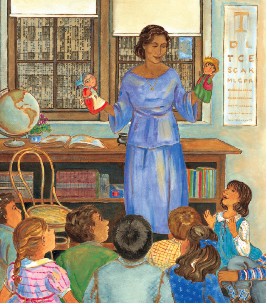



























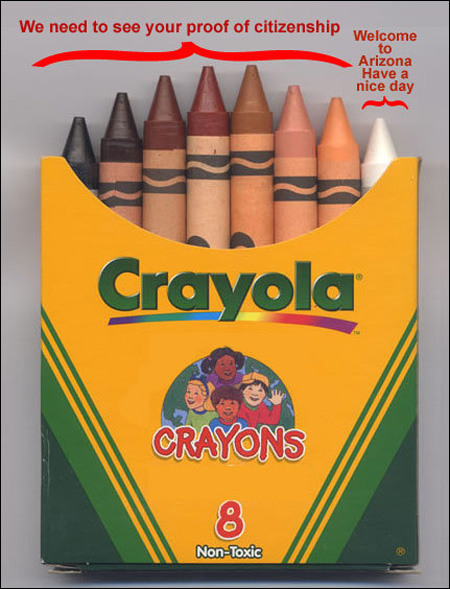




From twitter, @citymousedc recommends BIG RED LOLLIPOP by Rukhsana Khan, ill. by Sophie Blackall.
Thanks for this list. Read some thoughts re: Deep in the Sahara at the Global Reach Libraries blog: http://globalreachlibraries.com/?p=164
Other recommendations:
Jahanforuz, Rita – The girl with a brave heart: a tale from Tehran – Folktale-esque story of a girl, her stepsister and mother in an Iranian setting. The author is a famous Middle Eastern singer.
Krebs, Laurie and Anne Wilson – We’re sailing down the Nile: a journey through Egypt – sing-song rhyme leads a boatload of modern kids to tour historical sites on the Nile. Simple, for 1st-2nd grade. Nice that the characters have Arabic names and look Egyptian.
Mobin-Uddin, Asma – The best Eid ever – A girl staying with her grandmother while her parents are on the Hajj learns about giving. (One of the few books about Eid al-Adha)
Discovered The Day of Ahmed’s Secret today. Picture book (probably for 5 and up) about a boy going through his day in Cairo with a happy secret (spoiler: he can write his name). It’s a simple story but a very positive portrayal.
Moon Watchers:Shirin’s Ramadan Miracles by Reza Jalali, ill. by Anne Sibley O’Brien (Tilbury House Publishers; First hardcover edition May 11, 2010
From Booklist:
This moving picture book for older readers about a young Muslim girl and her family at Ramadan weaves together the traditional observance and its meaning with a lively drama of sibling rivalry. In her backyard in Maine, Shirin, 9, and her father watch for the new moon that starts the holy month. Shirin begs to be allowed to fast, like her older brother, Ali, 12, but she is furious when her family tells her she is too young. Then her parents decide to let her fast for part of the day, and she is thrilled. She also learns that Ramadan is about doing good deeds to help others. The unframed, intricately detailed, mixed-media illustrations show the siblings’ ugly standoffs (Shirin’s jealousy, Ali’s smugness), as well as the family at prayer, at the dinner table, and in warm close-ups. Along with the information about the holiday, there is a real story here: when Shirin helps Ali, it changes their relationship and reveals the meaning of the holiday. Grades 2-4. –Hazel Rochman